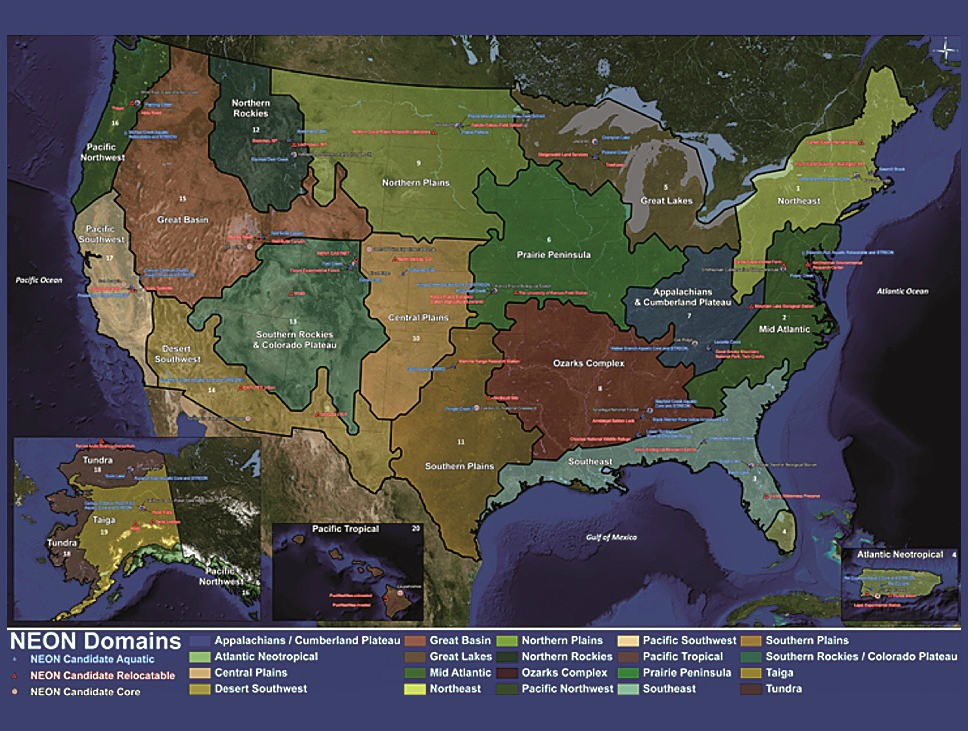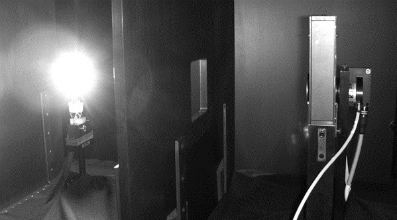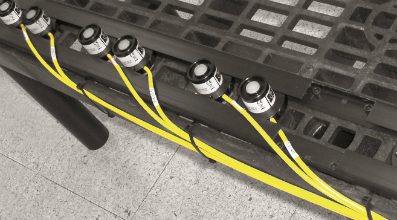In order to help understand these changes, the National Ecological Observatory Network (NEON) was created to collect data across the United States on the impacts of climate change, land use change, and invasive species on the biosphere. NEON will be the first observatory network of its kind designed to detect and enable forecasting of ecological change at continental scales over multiple decades. The data NEON collects will be freely and openly available to all users.
To gather ecological data in a strategic manner, NEON has partitioned the U.S.A. into 20 eco-climatic domains (see figure below), each of which represents different regions of vegetation, landforms, climate, and ecosystem performance. Division of the U.S. into domains ensures that NEON is able to systematically sample the whole country in a model objectively representing environmental variability.

NEON is funded by the National Science Foundation and has passed the planning and development stages and is now entering the construction phase of measurement stations. Soon the data will begin to come in. Constructing the entire network will take approximately five years and it is expected to be in full operation by 2016.
NEON has selected the Kipp & Zonen PQS 1 Photosynthetically Active Radiation (PAR) Quantum Sensor for use in the network. Over 1,500 PQS 1 sensors will be installed over the next 5 years, deployed at various levels of the forest canopy to accurately measure the pattern of PAR availability and utilization. To ensure consistent and accurate data NEON has developed a calibration facility traceable to the National Institute of Standards and Technology (NIST) for the PQS 1 PAR sensors, which is shown below.
NEON plans on collecting data for the next 30 years, so this data needs to be of the highest accuracy and reliability and the collection frequencies need to remain constant.
 NEON will also implement a Scientific Solar Monitoring Station from Kipp & Zonen in accordance with the guidelines of the Baseline Surface Radiation Network (BSRN) to measure direct, diffuse and global solar radiation with the highest accuracy. The station will include the SOLYS 2 sun tracker with CHP 1 Pyrheliometer, two CVF 3 ventilated CMP 22 Pyranometers and a ventilated CGR 4 Pyrgeometer.
NEON will also implement a Scientific Solar Monitoring Station from Kipp & Zonen in accordance with the guidelines of the Baseline Surface Radiation Network (BSRN) to measure direct, diffuse and global solar radiation with the highest accuracy. The station will include the SOLYS 2 sun tracker with CHP 1 Pyrheliometer, two CVF 3 ventilated CMP 22 Pyranometers and a ventilated CGR 4 Pyrgeometer.
The PQS 1 PAR Quantum Sensor is just one of many in this network. NEON scientists will use more than 11,000 sensors of 44 different types to make dozens of different kinds of measurements, from soil moisture to water temperature, to wind speed. All to understand how the biosphere is changing in response to human activities.
More information on NEON’s calibration facility can be found at: http://www.neoninc.org/news/calvallab
